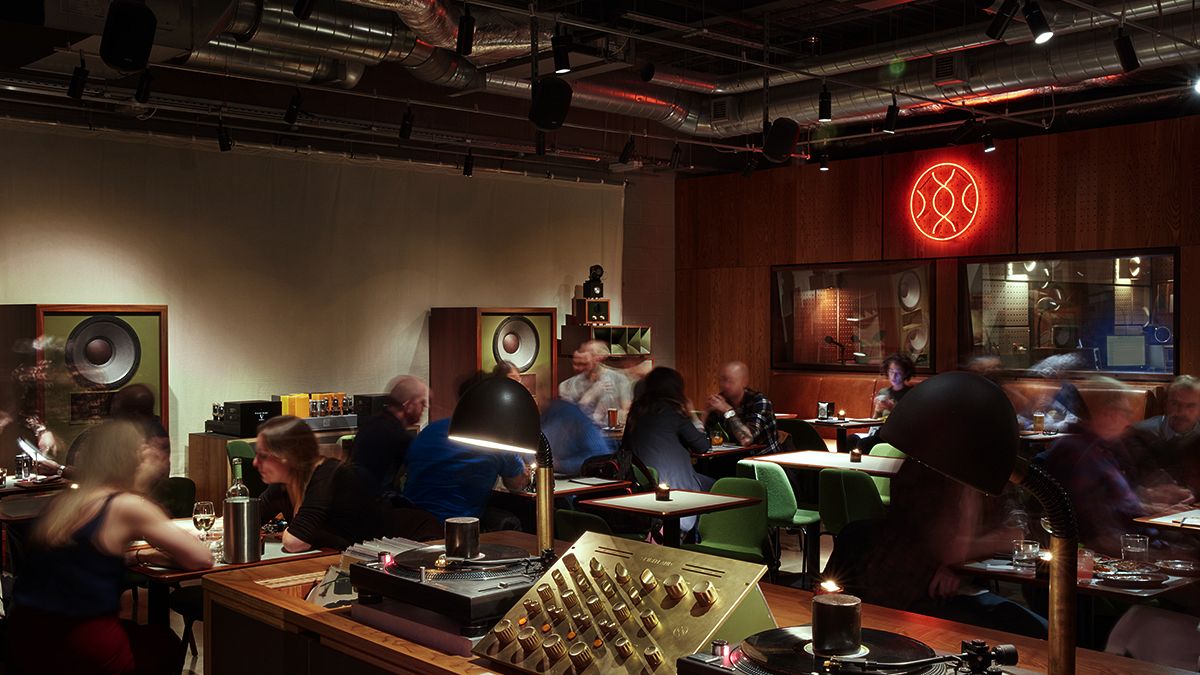Nxt Museum’s 'Still Processing' explores the intersection of art, technology, and human perception, offering a critical reflection on the impacts of living in an image-saturated digital age.
“When you break something, and it falls apart, sometimes you really see what actually was there in the first place,” Rosa Menkman tells Euronews Culture.
Dutch artist and researcher Menkman’s investigation (a “breaking apart”) of image processing is central to Nxt Museum’s recently opened exhibition, 'Still Processing'.
Situated in Amsterdam’s rapidly evolving Noord neighbourhood – a formerly neglected industrial area turned creative hotspot – Nxt Museum has since its genesis, as founder and director Merel van Helsdingen explains, sought to “bring together art, technology, science, and performance”. 'Still Processing' builds on that vision, inviting us into a liminal space where our perception of reality, mediated by technology, is interrogated – primarily, as van Helsdingen points out, via the work of local artists.
Unpacking the overload
The title of the exhibition, 'Still Processing', speaks volumes about the current state of our relationship with technology. In an era where we are bombarded by a deluge of information and images, how do we process the constant stream? How do we reconcile the rationality of technology (although technology, too, can reflect human biases) and the emotional impact it has on us? The works on display probe these questions, inviting visitors to explore the implications of how images and sounds are created, transformed, and consumed.
'Still Processing' is divided into two primary themes: the manipulation of images by technology, and the role of the human brain in processing these transformations. At its core, the show invites visitors to pause, take stock, and consider the mental and emotional imprints left by the digital age: from the flattening of images in digital compression to the evolving nature of AI-generated worlds.
“The title is pretty much describing how we all feel. We’re all processing an overload of images, an overload of information… we are experiencing some kind of image crisis,” Bogomir Doringer, the exhibition’s curator, said at the show’s opening.
Break it all apart
For Menkman, there is great value in deconstruction. In a conversation with Euronews Culture, she shared how her interest in image processing began during her early studies of new media. “Computers were scary then – if they would break, they would be expensive to fix. You would lose everything. There was no backup,” she recalled. This fear, however, drove Menkman to explore what happens when things fall apart, particularly with regard to image-making. “When you break something, and it falls apart, sometimes you really see what actually was there in the first place,” she explained. This idea of seeing through disruption runs throughout her works in the exhibition, with each work – set across four rooms – highlighting a key development: the transition from analogue to digital, platform-shared imagery, synthetic (computer-generated) imagery, and JPEG compression.
Perhaps most intriguing, and revealing, among her works are 'IM/POSSIBLE RAINBOWS' (2023-2025), which spotlights how pollution and technology alter our perception of rainbows – ubiquitous as they are in brand logos and flags, and often perceived as made up of discrete stripes of colour rather than a colour gradient – and 'DE/CALIBRATION ARMY (2017)', uncovering the racist biases baked into our most basic image-processing algorithms. “I propose decalibration as a new norm,” a Shutterstock model tells visitors, speaking from within an app called Perfect365, which allows images to be manipulated with a built-in “bias picker”.
As Menkman explained, "Images, even a rendered image, are not actually static… There are so many layers in which these processes are taking place."
Constant flux
Notable not least for its sheer scale, visually captivating work 'The Slollaleia' (2025) by Balfua creates a digital world inhabited by shape-shifting creatures called Slollas. These creatures communicate through sounds and evolve unpredictably, offering visitors an unnerving journey through an ever-changing environment. The creatures exist in a continuously evolving digital realm, created using a mix of conventional and digital processing tools. The work mirrors the constant flow of information we process daily, hinting at the unpredictable nature of our interactions with technology.
The fusion of art and technology is also exemplified by the haunting 'Simulation in Blue' (2025) by Geoffrey Lillemon. In this piece, AI-generated musicians, caught in a digital realm of improvisational chaos, challenge our understanding of both performance and visual art. The spectral, ever-shifting nature of these characters – erratic in their movements – elicits a sense of both attraction and unease. Doringer aptly describes this tension: “The behaviour of these entities is sometimes predictable, sometimes not. But results are very seductive, so we keep on processing and trying to process these images further.”
Perceptions of space and time
Several works in Still Processing explore the lingering effects of light and sound on the body and mind. 'Red Horizon' (2014) by Gabey Tjon a Tham is a kinetic sound and light installation that draws inspiration from the chaotic yet precise movements of swarms in nature. The work features 15 double pendulums, each with white lights and speakers, creating unpredictable patterns on the walls. As visitors watch, they may notice afterimages – blue and purple traces left on the retina. These lingering visual imprints, which slowly fade as one moves through the space, serve as a poignant metaphor for the way technology leaves lasting traces.
Something of an assault on the senses of sight and hearing, 'DURATION' (2025) by Boris Acket calls to mind Doringer’s comment about “processing an overload of images, an overload of information”. Acket’s immersive, responsive audiovisual installation – a dynamic grid that towers high above visitors as they walk amidst it, in an otherwise dark space – distributes light and sound, breaking down individual audio inputs into intricate patterns that interact with light to offer a fragmented sensory experience.
Our subjective experience here meets the mechanical, the grid’s intense sound and light producing a kind of glitchy, yet overbearing chaos – as we traverse the space, subject to unpredictable noise and illumination, our experience of time and space (and our agency in this experience) is called into question.
Similarly destabilising our notions of temporal and spatial dimensions, Children of the Light's 'All-Together-Now' (2025) creates an ethereal atmosphere that seems to exist in multiple dimensions at once. Inspired by the first-ever image of a black hole, this work consists of five floating rings that move through cycles of synchronisation, dissolving spatial boundaries as they shift in tone and light. The work's ephemeral qualities evoke a sense of time and space that is at once personal and universal, inviting viewers to experience light and sound as more than mere physical phenomena.
“You might feel like you're in a church, but you could also be in a club,” said Doringer of Still Processing. Indeed, the works presented here – in something of a night club vibe, with dark rooms and abundant flashing lights – are thought-provoking philosophical inquiries into how we engage, physically and emotionally, with the fast-moving world of technology.
From the subtle shifts in perception to the overwhelming presence of AI-generated characters, the exhibition underscores the volatile nature of the digital image and the cognitive load it places on us. I, for one, am certainly still processing.
'Still Processing'runs at Amsterdam's Nxt Museum until 5 October 2025.

 1 month ago
20
1 month ago
20






 We deliver critical software at unparalleled value and speed to help your business thrive
We deliver critical software at unparalleled value and speed to help your business thrive






 English (US) ·
English (US) ·